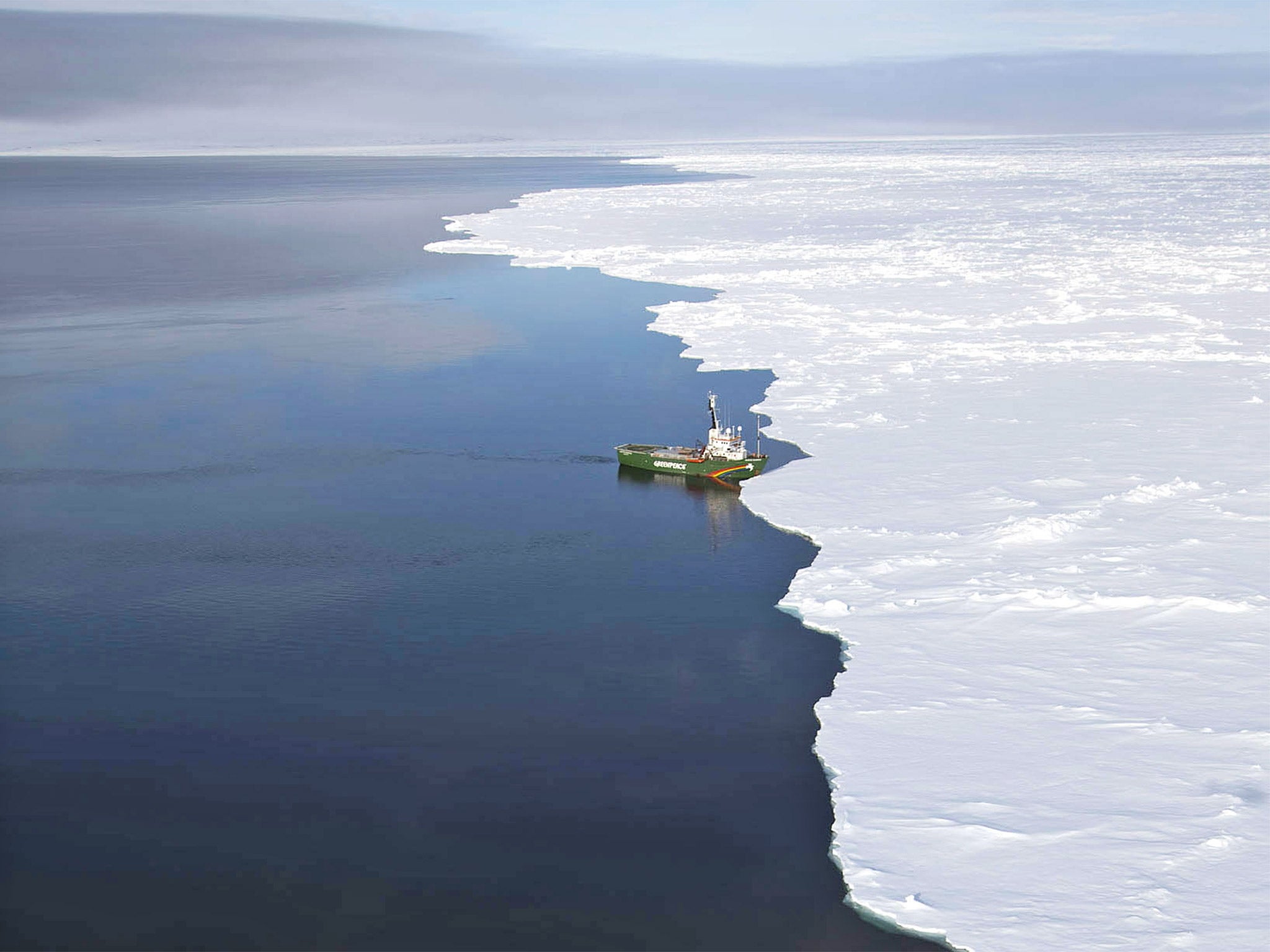Artificially manipulating Arctic climate by 'whitening' surface of ocean to reflect sunlight back into space will fail, say scientists
Some have suggested that this radical approach should be considered in a global emergency if the summer sea ice of the Arctic disappears completely

Attempts to artificially manipulate the Arctic climate by “whitening” the surface of the ocean in order to reflect sunlight back into space and so mimic the effect of lost sea ice are almost certainly doomed to fail, scientists said.
Some researchers have suggested that this radical “geoengineering” approach should be considered in a global emergency if the summer sea ice of the Arctic disappears completely, as climate models predict it will in the coming decades due to global warming.
They have argued that such draconian measures may be the only way of helping to prevent the melting of frozen permafrost in the ground of the northern hemisphere which prevents billions of tonnes of underground methane – a potent greenhouse gas – from escaping into the air. This “positive feedback” would dangerously accelerate global warming.
However, a study of how the Arctic climate would respond to the introduction of artificial methods of whitening the ocean has revealed that although some sea ice would re-form, the overall warming of the region would persist – causing the permafrost to melt anyway.
“Simply put, our results indicate that whitening of the surface of the Arctic Ocean would not be an effective tool for offsetting the effects of climate change cause by atmospheric greenhouse gas,” said Kenneth Caldeira, a climate researcher at the Carnegie Institution in Washington DC.
“Furthermore, it is not clear to me that there is a technically feasible way of actually doing this, and even if you could do it, the direct negative consequences of reducing the amount of sunlight available to marine ecosystems could be huge,” Dr Caldeira said.
Various suggestions have been made over the years to increase the reflectivity or albedo of the Earth’s polar regions. They have included seeding the oceans with microbubbles or reflective grains to make the ocean “whiter”, or dispersing sulphate aerosols in the stratosphere to increasing the albedo of the sky.
“These ideas are related in that ocean whitening, cloud whitening, or 'stratosphere whitening' all aim to reflect some of the sun's warming rays back to space. Different ways to try to accomplish essentially the same thing,” Dr Caldeira said.
“Proposals to restore sea ice by whitening the ocean could potentially restore some sea ice but would not do much to lower arctic temperatures or preserve permafrost,” he said.
“This conclusion is important because people are concerned that if Arctic permafrost melts, the potent greenhouse gas methane could be released to the atmosphere in large quantities, acting as a strong positive feedback on climate change.
“The idea of whitening the Arctic has generally been proposed as a way to prevent this positive feedback from occurring. Our results suggest it wouldn't much work,” he added.
The study, published in the journal Environmental Research Letters, used computer models to see what would happen if global CO2 levels increased fourfold above pre-industrial levels and the Arctic experienced average temperature rises 10C above those experienced more than a century ago.
The researchers found that ocean whitening could restore about three-quarters of a square kilometre of ice for every whitened square kilometre. However, the cooling achieved by ocean whitening would be modest and appears unable to maintain the permafrost and so prevent the release of methane, the scientists said.
The lead author of the study was Dr Ivana Cvijanovic of the US’s Lawrence Livermore National Laboratory in California.
Join our commenting forum
Join thought-provoking conversations, follow other Independent readers and see their replies
Comments